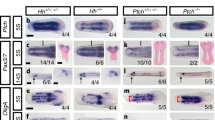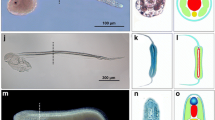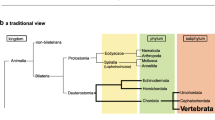Abstract
The hedgehog family of intercellular signalling molecules have essential functions in patterning both Drosophila and vertebrate embryos. Drosophila has a single hedgehog gene, while vertebrates have evolved at least three types of hedgehog genes (the Sonic, Desert and Indian types) by duplication and divergence of a single ancestral gene. Vertebrate Sonic-type genes typically show conserved expression in the notochord and floor plate, while Desert- and Indian-type genes have different patterns of expression in vertebrates from different classes. To determine the ancestral role of hedgehog in vertebrates, I have characterised the hedgehog gene family in amphioxus. Amphioxus is the closest living relative of the vertebrates and develops a similar body plan, including a dorsal neural tube and notochord. A single amphioxus hedgehog gene, AmphiHh, was identified and is probably the only hedgehog family member in amphioxus, showing the duplication of hedgehog genes to be specific to the vertebrate lineage. AmphiHh expression was detected in the notochord and ventral neural tube, tissues that express Sonic-type genes in vertebrates. This shows that amphioxus probably patterns its ventral neural tube using a molecular pathway conserved with vertebrates. AmphiHh was also expressed on the left side of the pharyngeal endoderm, reminiscent of the left-sided expression of Sonic hedgehog in chick embryos which forms part of a pathway controlling left/right asymmetric development. These data show that notochord, floor plate and possibly left/right asymmetric expression are ancestral sites of hedgehog expression in vertebrates and amphioxus. In vertebrates, all these features have been retained by Sonic-type genes. This may have freed Desert-type and Indian-type hedgehog genes from selective constraint, allowing them to diverge and take on new roles in different vertebrate taxa.
Similar content being viewed by others
Author information
Authors and Affiliations
Additional information
Received: 20 July 1998 / Accepted: 23 September 1998
Rights and permissions
About this article
Cite this article
Shimeld, S. The evolution of the hedgehog gene family in chordates: insights from amphioxus hedgehog. Dev Gene Evol 209, 40–47 (1999). https://doi.org/10.1007/s004270050225
Issue Date:
DOI: https://doi.org/10.1007/s004270050225




